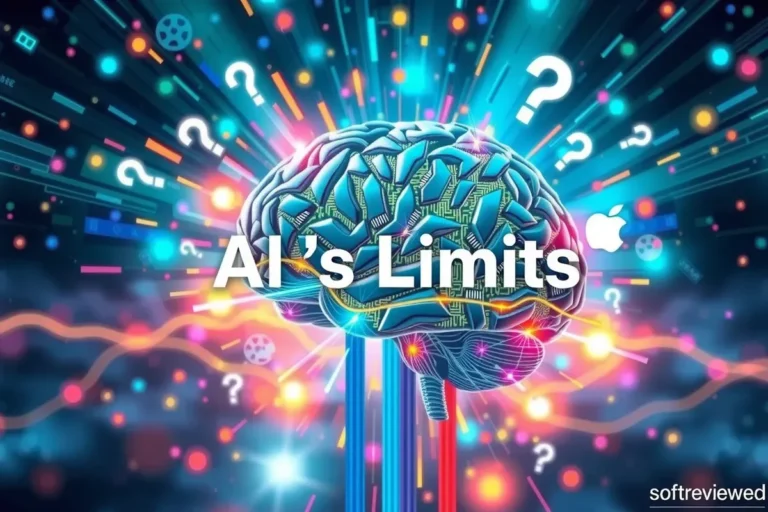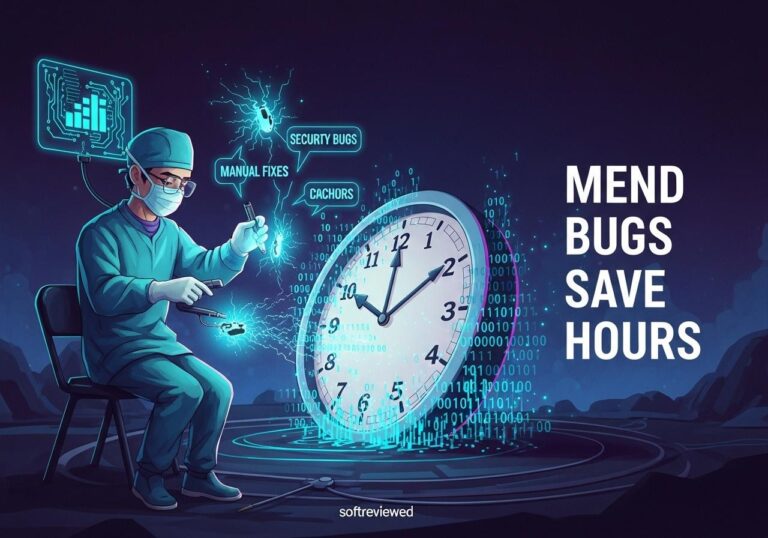LLMs: Pattern Matching vs. Reasoning
Recent research by Apple reveals limitations in large language models’ reasoning abilities.
Pattern Matching, Not Reasoning
LLMs solve problems using sophisticated pattern matching rather than genuine logical reasoning.
Fragility in Mathematical Reasoning
Adding irrelevant information or slight changes in question phrasing significantly deteriorates LLMs’ performance in mathematical reasoning.
No True Understanding of Problems
LLMs attempt to replicate reasoning steps observed in their training data, rather than truly understanding the problem or using logical reasoning.
Sensitivity to Changes in Phrasing
Changing names or numerical values can alter LLM results, with up to 65% accuracy reduction, even when the changes should not affect the solution.
Neurosymbolic AI as a Potential Solution
Apple suggests combining neural networks with traditional, symbol-based reasoning (neurosymbolic AI) to improve LLM decision-making and problem-solving abilities.
Impact on Real-World Applications
The limitations in LLMs’ reasoning abilities raise concerns about their reliability in critical real-world applications requiring consistent, accurate reasoning.
In a groundbreaking study, Apple's AI research team has uncovered significant weaknesses in the reasoning abilities of large language models (LLMs), challenging the notion that these AI systems can truly "think" or reason logically. This revelation has far-reaching implications for the future of artificial intelligence and its applications across various industries.
Understanding the Study
Apple's research, published on arXiv, evaluated a range of leading language models, including those from OpenAI, Meta, and other prominent developers. The study aimed to determine how well these models could handle mathematical reasoning tasks, and the results were eye-opening .
The GSM-Symbolic Benchmark
To conduct their evaluation, Apple researchers introduced the GSM-Symbolic benchmark, an improved version of the widely-used GSM8K benchmark for assessing mathematical reasoning in AI models. GSM-Symbolic allows for more controllable evaluations and provides more reliable metrics for measuring the reasoning capabilities of models .
Key Findings

Pattern Matching vs. Genuine Reasoning
The study revealed that LLMs rely heavily on pattern matching rather than employing genuine logical reasoning. This finding challenges the perception that AI systems are capable of human-like thought processes .
Fragility in Problem-Solving
Researchers found that even slight changes in the phrasing of questions could cause major discrepancies in model performance. This fragility undermines the reliability of these AI systems in scenarios requiring logical consistency .
Performance Degradation with Irrelevant Information
All models tested, from smaller open-source versions like Llama to proprietary models like OpenAI's GPT-4o, showed significant performance degradation when faced with seemingly inconsequential variations in the input data .
Illustrative Examples
The Kiwi Problem
One example from the study involved a simple math problem asking how many kiwis a person collected over several days. When irrelevant details about the size of some kiwis were introduced, models such as OpenAI's o1 and Meta's Llama incorrectly adjusted the final total, despite the extra information having no bearing on the solution .
Name Changes Affecting Results
The researchers found that "simply changing names can alter results by ~10%," highlighting the models' reliance on superficial patterns rather than logical reasoning .
Implications for AI Development
Rethinking AI Capabilities
This study challenges the notion that current AI systems are truly "intelligent" in any meaningful sense. Instead, they appear to be highly advanced at speech and writing pattern recognition – essentially sophisticated electronic parrots .
The Need for New Approaches
Apple suggests that to achieve more accurate decision-making and problem-solving abilities, AI might need to combine neural networks with traditional, symbol-based reasoning. This approach, known as neurosymbolic AI, could potentially bridge the gap between pattern recognition and genuine logical reasoning .
Industry Reactions and Perspectives
Skepticism Towards AI Hype
Some experts argue that much of the hype surrounding AI's capabilities stems from a lack of understanding about how these systems actually work. The perception of AI as borderline sentient has been fueled by misinterpretations of AI behavior and media sensationalism .
Ethical and Legal Concerns
The study's findings raise important questions about the ethical and legal implications of using AI systems for critical decision-making processes. If these models cannot consistently reason logically, their use in high-stakes scenarios becomes problematic .
Looking Ahead: The Future of AI Research
Addressing Current Limitations
As the limitations of current LLMs become more apparent, researchers and developers will likely focus on creating more robust and reliable AI systems that can truly reason rather than simply pattern match .
Potential for Neurosymbolic AI
The development of neurosymbolic AI, which combines the pattern recognition strengths of neural networks with the logical reasoning capabilities of symbolic AI, may be a promising direction for future research .
How Do Mistral’s New AI Models Address the Reasoning Limitations Found in Apple Research?
Mistral’s new AI models strategically tackle the reasoning limitations identified in Apple Research. By enhancing contextual understanding and complex decision-making, these advancements ensure more accurate outputs. With their innovative technology, it’s clear why mistral launches ai models for devices marks a significant leap forward in artificial intelligence capabilities.
Conclusion
Apple's research has shed light on a critical flaw in current AI systems: their inability to reason logically in a consistent and reliable manner. This revelation challenges the narrative of rapid AI advancement and highlights the need for a more nuanced understanding of AI capabilities.
As we move forward, it's crucial to approach AI development with a clear-eyed view of its current limitations. While LLMs have shown impressive capabilities in many areas, true artificial intelligence – capable of reasoning and understanding in a human-like manner – remains an elusive goal.
This study serves as a reminder that while AI has made significant strides, there is still a long road ahead before we can create systems that truly think and reason. It's a call to action for researchers, developers, and industry leaders to continue pushing the boundaries of AI technology while maintaining a realistic perspective on its current capabilities and limitations.
LLM Performance Decline with Increasing Complexity
This chart illustrates how LLM performance decreases as the number of clauses in a question increases, demonstrating limitations in handling complex information.







